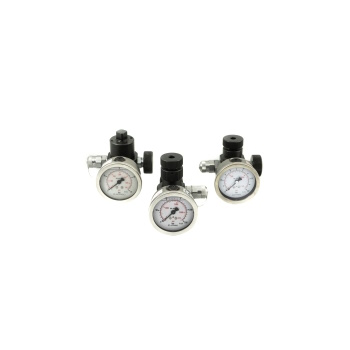The Importance of Diagnostics in Hydraulic Systems
Diagnostics represent the turning point in modern maintenance of hydraulic systems. Every hydraulic circuit — composed of pumps, valves, actuators, and tanks — operates on precise balances of pressure, flow rate, and oil viscosity. When one of these parameters deviates, efficiency is immediately lost and the likelihood of failure increases exponentially.
In this context, the use of hydraulic system diagnostic tools is not optional but operationally essential. It means moving from reactive maintenance (which acts after failure) to predictive maintenance based on real data. Measuring instruments, when properly integrated, make it possible to read the “health” of the system and intervene before an anomaly turns into downtime or fluid degradation.
Diagnostics are based on four key parameters:
- Pressure, the primary indicator of system efficiency and sealing;
- Flow rate, directly linked to the volumetric performance and efficiency of the pump;
- Temperature, which determines oil viscosity and therefore the stability of the lubricating film;
- Contamination, responsible for most internal failures.
Tools such as digital pressure gauges, temperature sensors, flow meters, and oil analyzers make it possible to translate these variables into measurable information. A pressure gauge installed upstream of the pump, for example, allows rapid identification of pressure drops or cavitation. A temperature sensor on the oil return line, on the other hand, detects overheating that shortens component life.
Even contamination, invisible to the naked eye, can be monitored through particle sensors and inline oil analyzers. The result is a system that “communicates” with the technician: every deviation becomes a diagnostic signal that can be interpreted and managed in real time.
In the LubeTeam Hydraulic catalog, you’ll find a complete range of instruments dedicated to measuring and controlling operational variables, including pressure gauges, essential for any activity involving pressure and pressure drop analysis.
Essential Tools for Effective Diagnostics

Sensors and Measuring Devices for Pressure, Flow, Temperature, and Contamination
A high-performance hydraulic system relies on structured diagnostics. The main instruments can be divided into four functional categories.
1. Pressure Gauges and Pressure Transducers
The pressure gauge is the diagnostic instrument par excellence. It provides an immediate indication of the system’s health. The most advanced models integrate digital transducers with data logging, enabling the monitoring of dynamic variations and early identification of leaks, blockages, or internal failures.
2. Flow Meters and Flow Sensors
These measure the amount of fluid passing through a point in the circuit over a given time interval. A steady drop in flow rate is often the first sign of pump wear or a clogged filter. Turbine or ultrasonic flow meters ensure precision and fast readings, even in complex systems.
3. Temperature Sensors and Integrated Heat Exchangers
Oil temperature directly affects viscosity and system efficiency. Effective thermal control keeps the oil within the optimal range (40–60 °C). Thermal sensors and heat exchangers work together to prevent overheating and ensure stable heat dissipation.
4. Contamination Analyzers and Sensors
Fluid cleanliness is the most critical parameter. A system contaminated by solid particles, water, or air undergoes progressive and unpredictable degradation. Inline contamination sensors continuously monitor the oil’s ISO class, signaling in advance when filtration or fluid replacement is required.
Today, diagnostics go beyond simple measurement: they integrate data through acquisition systems (DAQ) and predictive analysis software. This approach allows correlations between events (e.g., temperature rise and pressure drop) and the generation of automatic alerts for targeted interventions.
Practical example: In a hydraulic circuit for industrial presses, simultaneous variation in pressure and flow may indicate an internal leak in the pump or a valve that is not completely closed. A well-calibrated diagnostic system detects the deviation and enables maintenance planning before the failure becomes catastrophic.
Diagnostic instruments therefore represent not only a monitoring tool but a true strategic maintenance asset. In an era of advanced automation and predictive maintenance, they become the vital sensors of an intelligent ecosystem where every data point contributes to production continuity and the reduction of Total Cost of Ownership (TCO).

